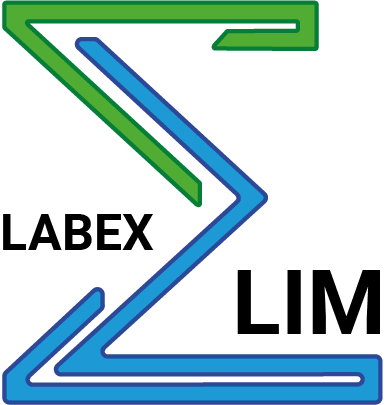Going beyond 5G
Detect and overcome the obstacles related to future high-speed communication systems beyond 5G by developing advanced 3D integrated RF front-end design methods, new technologies for THz subsystems and through the security and interoperability of these systems.
![]()
This flagship addresses 3 challenges dedicated to future generations of wireless communication systems, one focused on advanced design methods, the other on dedicated new technologies and the third on security for such systems, which highlight the complementarities of IRCER and XLIM researchers to detect and overcome obstacles related to future high-speed communication systems beyond 5G.
The objective is to develop a transceiver system, for demonstrating full or partial reconfigurability (frequency, coverage, power) and its 3D integration. The demonstrator will be integrated in three dimensions by the mean of a global design approach and will exploit additive manufacturing technologies together with high performance materials. This work, focused on optimization of systems performance, will be carried out considering technologies available up to 100 GHz.
The challenges are the co-design and the technological co-integration of circuits and antennas, for optimizing RF and energy performance of the reconfigurable system and its conformation on a hosting object (drone, satellite, vehicle, urban furniture, etc.).
Original solutions are developed, based on 3D multi-material (ceramic/metal) additive manufacturing technologies developed by IRCER and considering the whole digital chain (geometric modeling and analysis, simulation before final manufacturing). This will allow integration of low-loss and, for some, tunable passive functions (functional materials or agile components), to radiate energy with maximum gain and efficiency, transfer, interconnect and encapsulate integrated RF circuits, by minimizing losses and, for active circuits, to allow dissipated heat to be evacuated.
This challenge is to address identified technological roadblocks for the realization of communication systems beyond 100 GHz which take advantages of the skills of IRCER in the development of materials and of thin films deposition processes and in the domain of multi-scale characterizations of materials, and of XLIM for the design and optimization of functional demonstrators.
Teams are working on the design new switches using materials with tunable properties, particularly new phase change or phase transition materials, studied for several years in the framework of the LABEX Σ-LIM.
As example, it is possible to produce bistable components with large electrical contrast, with applications at millimeter wavelengths, then at higher frequencies.
The passive circuits will use thin film 3D micro-fabrication technologies with an accuracy that makes it possible the fabrication of components such as filters or antenna arrays without post-production tuning, and integrating active chips in the final structure.
Finally, teams are also working on the development of tunable circuits beyond 100 GHz using micro-, nano-technologies and silicon-based circuits, relying on the available skills in the design of innovative devices and the development of processes for the fabrication of nano-structured materials and their characterization.
In the context of billions of static and mobiles IoT nodes sensing data and performing actions, the objective is to setup transversal test-bench to ensure:
-
Smart network management
The smart network management will use systems and front-end developed in challenges 1 and 2 in combination with techniques developed at XLIM like, massive multiple access, mobile network coding, etc.
-
Protection and traceability of information exchanged
Protection and traceability of exchanged information will rely on post-quantum cryptographic proposal developed at XLIM
-
Physical protection of node
The physical protection of node will be developed both at IRCER and XLIM since goal is to secure the nodes from silicon level up to the packaging of the nodes.
-
Interoperability with existing and future solutions
The interoperability will be ensured mainly at XLIM since the aims is to propose transparent gateways between different communication protocols as well as for their security.
This challenge is at the interface with the second challenge” Energy and advanced monitoring” of the flagship “Doing more with less energy” regarding energy aspects since solutions proposed will also enable smarter energy management for communication and to secure data.
Members
About 30 permanent members of IRCER and XLIM are partially or fully involved in this flagship.
Activities
- High-Performance 3D Reconfigurable RF Front-end Ceramic Based,
- Materials / Components for THz and Optical Applications, Management / Data Security.

